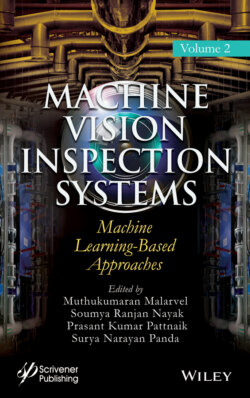Читать книгу Machine Vision Inspection Systems, Machine Learning-Based Approaches - Группа авторов - Страница 30
2.4 Experiments and Results
ОглавлениеThe proposed methodology has experimented with a few models based on capsule networks, while keeping the convolutional Siamese network that has proposed by Koch et al. as a baseline. As an initial attempt to understand the applicability of Capsules in Siamese networks, we integrate the network proposed by Sabour et al. [9] to a Siamese network, which does not give satisfactory result due to its inability to converge properly. Sabour et al. proposed this model for the MNIST dataset which is a collection of 28 × 28 images of numbers. However, in our study, we scale out this model to 105 × 105 images of Omniglot dataset, which makes it highly compute-intensive to train the learning model.
In order to mitigate the high computational power, improvements were made to the previous model based on the ideas proposed in DeepCaps [34] to stack multiple capsule layers and finally replace the L1 distance layer with a vector difference layer. Validation accuracies for different models are reported in Table 2.2. Here, three Siamese networks were tested while keeping Convolutional Siamese network [7], as the base. The network is purely based on Sabour et al. [9] showed poor performance, while Capsule Siamese 1 with deep capsule networks and Capsule Siamese 2 with deep capsule and new vector difference layer shows on par performance to the base model. This is an indication that the original Siamese network with classical Capsule layers is not generalized enough.
Table 2.2 Model validation accuracy.
| Class | Agreement (%) |
|---|---|
| Convolutional Siamese | 94 ± 2% |
| Sabour et al. Capsule Siamese | 78 ± 5% |
| Deep Capsule Siamese 1 | 89 ± 3% |
| Deep Capsule Siamese 2 | 95 ± 2.5% |
